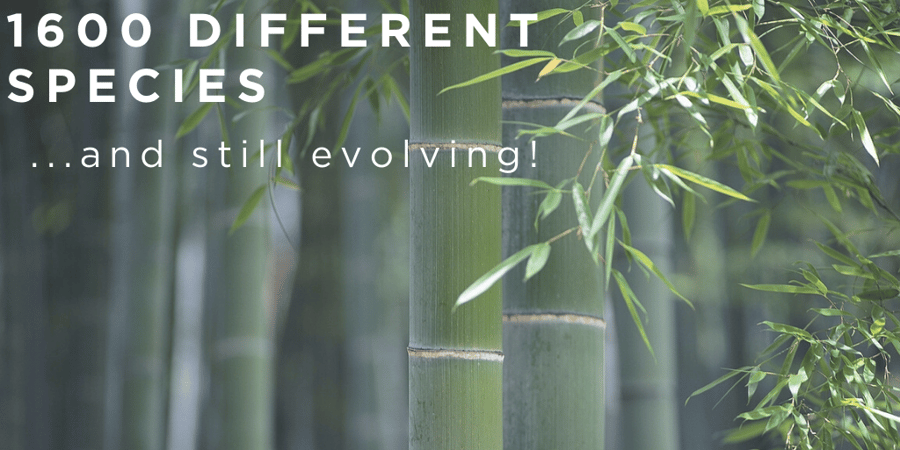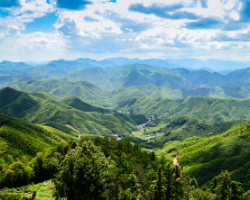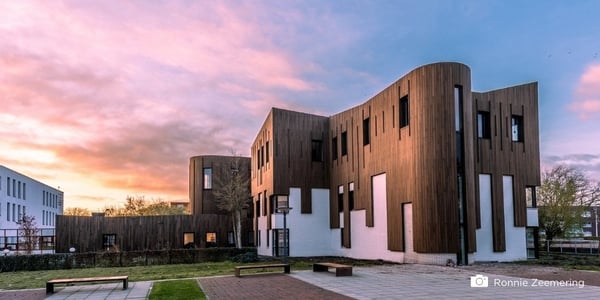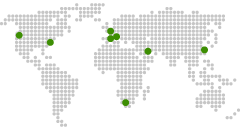It Runs in the Family
From a botanical point of view, bamboo belongs to the grasses, the Graminea, and is therefore not a tree. Bamboo is a collective name for a group of botanical species. Although the complete taxonomy is still evolving, current estimations are that around 1500 different varieties exist. There are considerable differences in size, colour, node distribution and configuration, mechanical properties and climatic preferences.
Some giant species reach up to 30 m with cross sections of up to 30 cm per stem, whereas some sorts do not reach above 1 m in height and 1 cm in diameter. Depending on the climatic circumstances, there can also be a lot of variation in size and quality of the stems from the same species. Stems are larger in fertile, moist climates and smaller in dry sandy climates.
Fundamentally Different from Trees
In general, bamboo is hollow (although some solid species exist), with separate sections at irregular distances formed by transverse diaphragms in the cavity of the stem. These diaphragms are visible on the wall of the stem as ring-shaped protrusions and this is also where the branches with the leaves sprout from, usually from the higher nodes.
The plants have a root system consisting of underground parts called rhizomes from which the stems grow above the ground. The rhizomes anchor the plant to the soil and supply it with food and water to produce new rhizomes. One single organism therefore has multiple stems. The extensive rhizome network also helps to hold soil and restore water tables, making bamboo very suitable for reforestation on poor grounds.
Unlike a tree trunk, the bamboo stem does not grow in thickness. The thickness of the sprouting shoot determines the thickness of the mature stem as cell growth only occurs in longitudinal direction. The various sections of a mature stem are already present right from the start and extend from each other like the tubes of a sliding telescope.
Grow Bamboo, Grow!
One of the most interesting features of giant bamboo is its unsurpassed growing speed. During the growing season, the shoots will sprout from the ground and reach their final length of up to 30 m height within a couple of months, with a maximum recorded growing speed of up to 1 meter a day. In fact, it holds the Guinness World Record of fastest growing plant:
Bamboo holds Guinness World Record for Fastest Growing Plant
Lignification (hardening of the stem) occurs within 2-3 years while maturity is attained after about 5 years, which is the moment the stem is ready for harvesting and for use in durable products in the building industry. Because of its fast growth, the plant absorbs a large amount of CO2 from the atmosphere, providing oxygen in return, which is locked for a long time not only in the plantation but also in the high number of semi-finished materials produced from harvested bamboo (annual yield, see also chapter 4 in Booming Bamboo).
World Wide Distribution
Although the common perception is that bamboo mainly grows in Asia, its growing area is actually evenly distributed around the globe. Giant species, which have the most potential for industrial processing and economic development, mainly derive from (sub)tropical areas, usually in developing countries or emerging economies.
China (7 mio ha) and India (9 mio ha) have the largest stocks of bamboo forests, totalling more than half of the 32 million hectares available worldwide. In Western countries, bamboo is mostly used as a garden plant and for landscaping.
The best-known giant species is probably the Phyllostachus Pubescens (up to 15-20 m long, 10-12 cm diameter), from China, where it is called ‘moso bamboo’). It is the backbone of the Chinese bamboo industry. Other well-known giant species are Guadua Angustifolia and Dendrocalamus Asper, which grow in tropical regions, both known for their enormous size (up to 25 meters high with a diameter of up to 22 cm) and good structural properties. Guadua is known in particular for its strength.
Sustainable forestry by default
One plant consists of several poles and new shoots will grow from the mother plant every year. In general, 20-25% of the poles in a forest or plantation can be sustainably harvested annually without decreasing the size of the plantation or the number of poles per hectare. The organism does not die after harvesting. On the contrary, by harvesting the mature poles, the yield and quality of the plantation actually increases.
This means that bamboo is best managed as an agricultural crop, with an annual harvesting scheme, which makes it far less susceptible for clearcutting compared to wood with its long rotation cycles and long-term return on investment. Therefore, by default a farmer will manage his plot sustainably, to ensure a steady annual income, preventing deforestation. For the same reason, forest certification to prevent depletion, is less required for bamboo as is the case for wood production. At the moment, the only benefit of introducing a chain of custody certification would be that it helps safeguard social aspects in the bamboo industry. As many Western building projects nowadays demand certification for wood, this is often also demanded for bamboo (although it is not a wood), and since 2008 bamboo is included in the FSC® certification system.


















